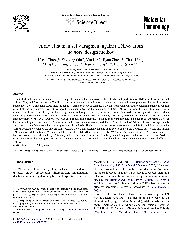摘要
Anti-TNF antibody has been an effective therapeutic strategy for the diseases related to aberrant production of TNF-alpha, such as rheumatoid arthritis (RA) and Crohn's disease. The limitations of large molecule inhibitors in the therapy of these diseases prompted the search for other potent novel TNF-alpha antagonists. Antagonistic peptides, derived directly or designed rationally from complementarity-determining regions (CDRs) of neutralizing antibodies against TNF-alpha, have been demonstrated for their ability of inhibiting TNF-alpha. However, their activity is very low. In this study, to increase the affinity and bioactivity, human antibody variable region was used as scaffold to display antagonistic peptides, which were designed on the interaction between TNF-alpha and its neutralizing monoclonal antibody (mAb Z12). Based on the previously designed domain antibody (framework V(H)5), framework V(kappa)1 was used as light chain scaffold. On the basis of computer-guided molecular design method, a novel human scFv fragment (named as TSA1) was designed. Theoretical analysis showed that TSA1 could bind to TNF-alpha with more hydrogen bonds and lower binding free energy than the designed domain antibody. The biological experiments demonstrated that TSA1 could directly bind with TNF-alpha, competitively inhibit the binding of mAbZ12 to TNF-alpha and block the binding of TNF-alpha to TNFR I and TNFR II. TSA1 could also inhibit TNF-induced cytotoxicity on L929 cells and TNF-meditated NF-kappa B activation on HEK-293T cells. The bioactivity of TSA1 was significantly increased over the domain antibody. This study indicated that the framework of antibody variable region could serve as an ideal scaffold for displaying the peptides and provides a novel strategy to design TNF-alpha inhibitors with the ability to block the deleterious biological effects of TNF-alpha.
